Zero Calorie Foods List – 23 Foods for Weight Loss
Don’t worry, this article is about more than just telling you to eat plain celery.
Which, to be honest, has never tickled my fancy.
No, the foods in this “zero calorie foods list” aren’t actually zero calories.
But they become so when a process called thermogenesis, essentially how the body heats itself up, comes into play.
The theory of zero-calorie foods is that the body will burn more calories metabolizing and cooking the food than the calories the food contains.
So, it doesn’t mean that these foods literally contains zero calories.
I don’t even think celery is actually ZERO calories.
But these foods contain few enough calories that your body burns more calories eating them than the food contains.
Cool, right?
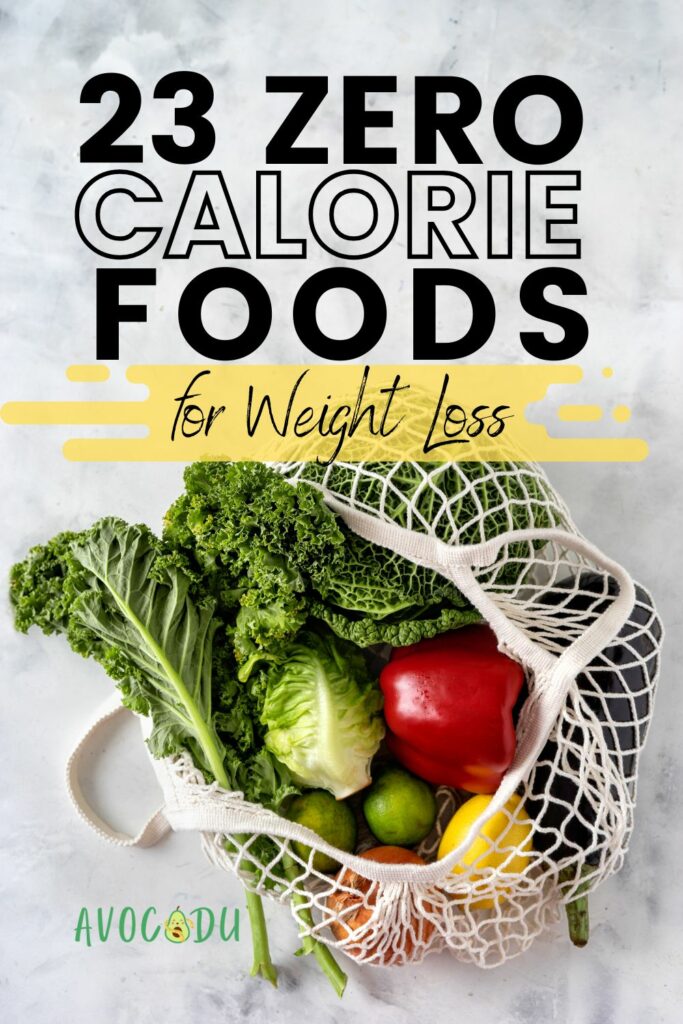
So make sure you add more of these foods to your diet any chance you get!
They will keep you away from calories and still fill you up.
The zero-calorie foods for weight loss were selected based on two criteria:
- The first was that they must be full of nutrients like vitamins and antioxidants for your health.
- The second is that they must be under 100 calories per 1 cup serving.
Here are the foods…
This post may contain affiliate links, which helps keep this content free. Please read our disclosure for more info.
1. Apples
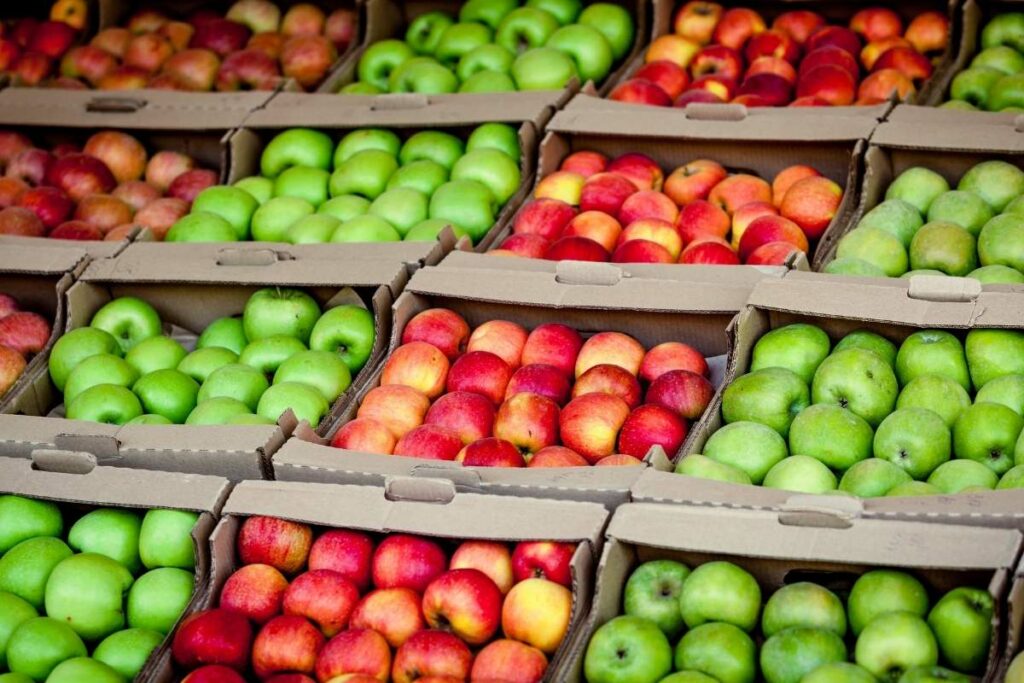
Apples are one of the healthiest fruits on the planet, containing antioxidants, vitamins, minerals, and even pectin (which has been shown to reduce hunger).
Eating an apple can be a great snack between lunch and dinner because it will keep the body full while providing a small energy boost.
It’s also a great snack to eat in the morning to keep you from reaching from the bigger breakfast sandwich because you get too hungry to choose a healthier option.
Calories per cup – 57 k/cal
2. Broccoli
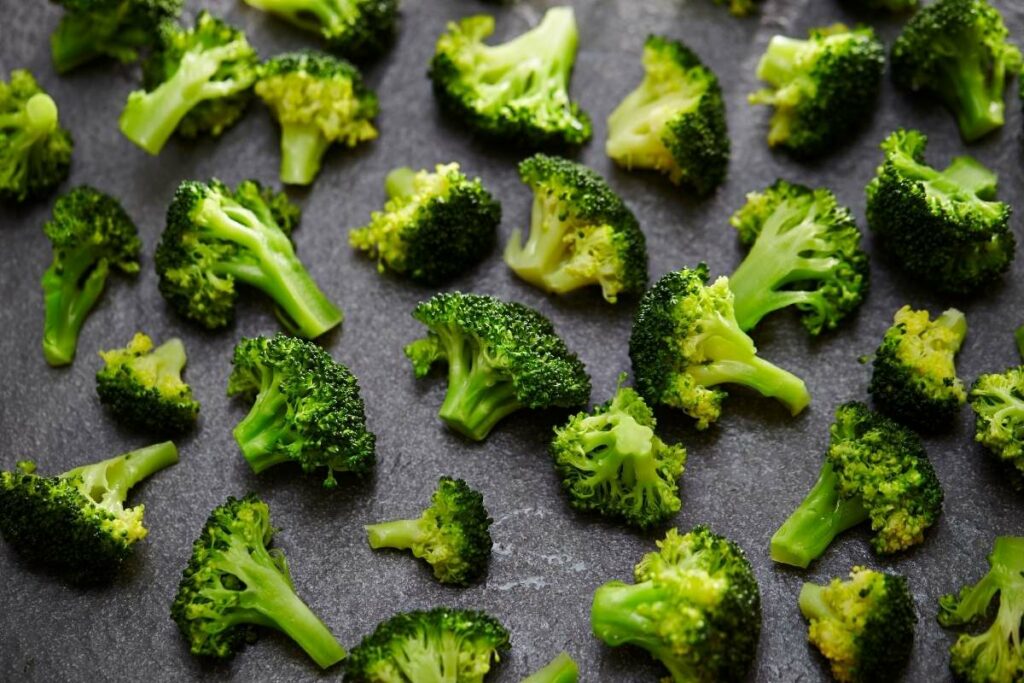
Broccoli is a superfood with the ability to lower the risk of cancer, raise vitamin D, C and K, provide healthy fiber, and it even contains a small amount of protein.
Many people supplement Vitamin D in their diet is very important because over 75% of people are deficient. Our favorite brand is Key Nutients, which produces the highest quality organic non-GMO vitamin D supplement on the market today.
vitamin d3 + k2
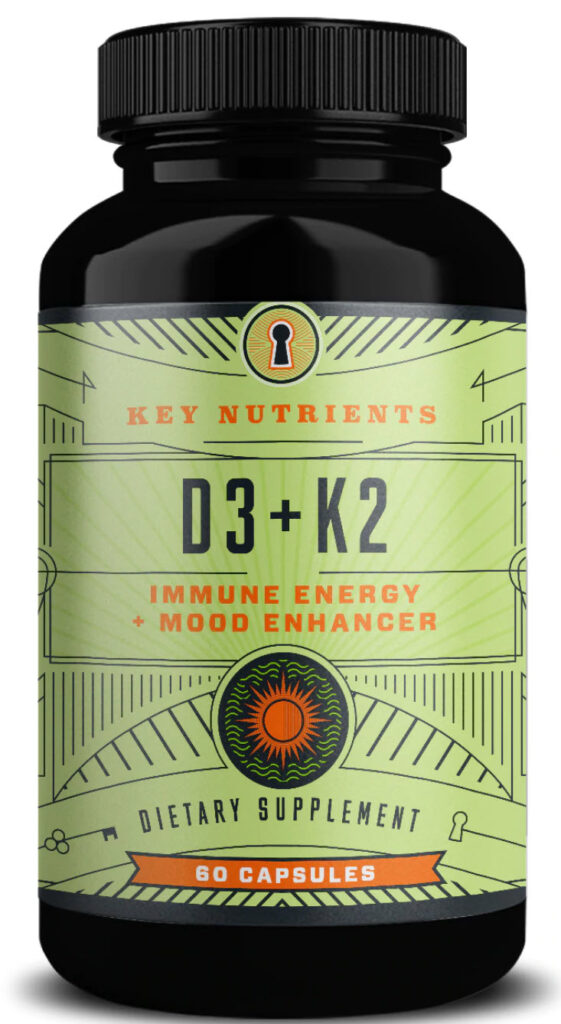
KeyNutrient Vitamin D3 + K2
This little pill packs a punch, it supports healthy heart & bones, taking our Vitamin D3+K2 once a day can boost immune systems, energy & enhances mood. See it here.
Broccoli also provides the unique benefits of lowering inflammation, helping with stress, and detoxifying the body. Broccoli is best cooked steamed, blanched, or roasted and can be paired with a variety of foods!
My personal favorite way to eat broccoli is roasted with some olive oil, salt, pepper, and lemon.
Calories per cup – 30 k/cal
3. Asparagus
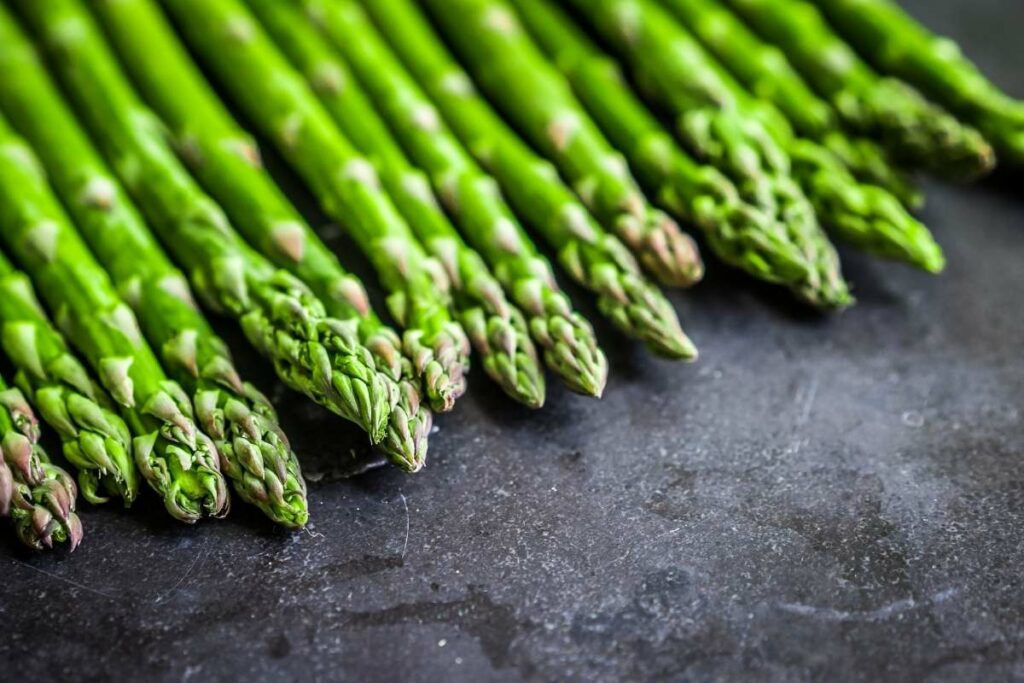
Asparagus is next on the list of zero calorie foods with its high amounts of vitamin K, folate, copper, fiber, and vitamin B1.
You can actually eat asparagus raw. I’ve eaten it raw on salads plenty of times, but I personally prefer it roasted or very lightly steamed.
Remember that the more you cook fruits and vegetables, the fewer nutrients they will retain when eaten. Try to eat vegetables raw or very lightly cooked or steamed whenever possible.
Calories per cup – 27 k/cal
4. Watermelon
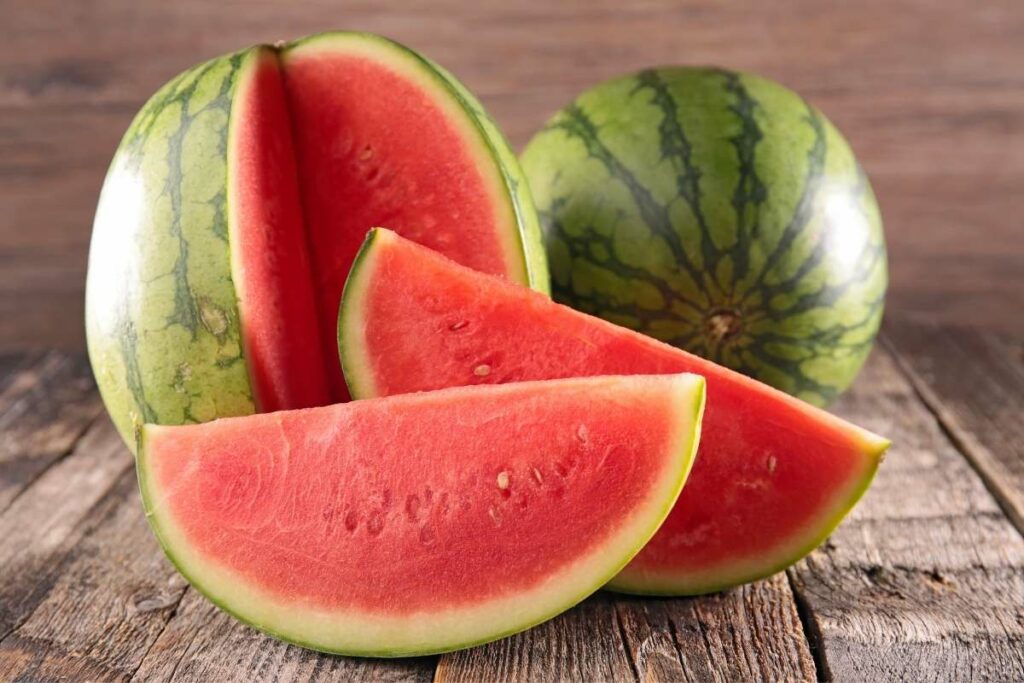
Watermelon… the perfect summer snack. It’s a delicious, low-calorie treat that you can enjoy without all the guilt.
It does contain natural sugar, so you don’t want to go overboard and eat an entire watermelon by yourself, but it’s also packed with antioxidants!
Try eating more watermelon as an afternoon snack or after dinner when you’re craving something sweet. I like to dice it up and freeze it during the summertime to try to trick myself into believing that it’s candy.
Calories per cup – 47 k/cal
5. Cucumber
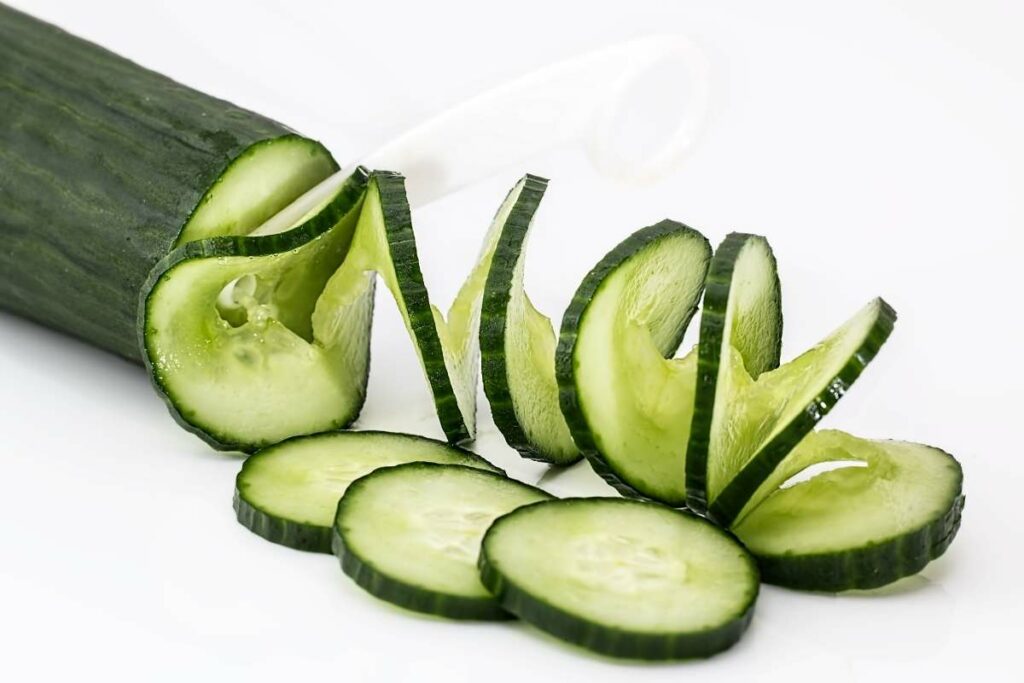
Cucumbers are a delicious nutrient powerhouse!
They contain polyphenols that reduce the rates of cancer and can help manage stress levels because they contain multiple B vitamins (B1, B5, B7, Biotin).
Because cucumbers primarily consist of water and fiber, they also provide support to the body’s digestive health.
My favorite ways to consume cucumbers:
- On a salad
- Sliced up with some hummus
- In some cucumber water
Calories per cup – 16 k/cal
6. Oranges
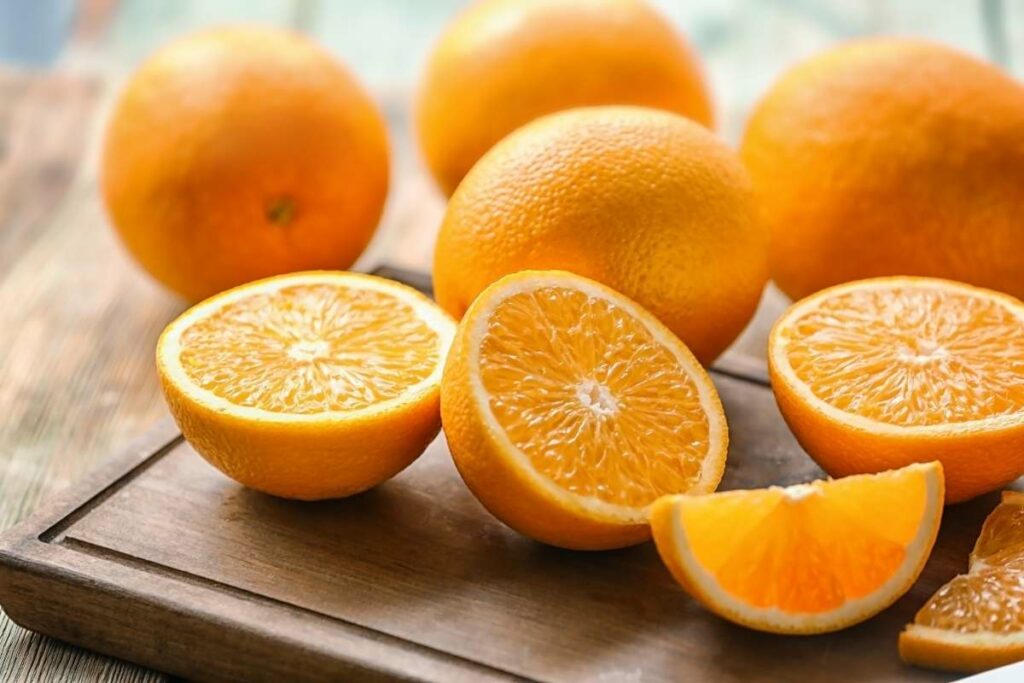
Oranges are known for having plenty of vitamin C, fiber, B vitamins, vitamin A, and calcium.
This is another great option if you are at work or just looking for a quick snack to kill your cravings. They have also been shown to lower the risk of heart disease because of their addition of potassium to a diet.
But as with watermelon, they also contain a good amount of natural sugars, so don’t go wild here. Stick to 1 per day when you’re getting a sweet craving.
Calories per cup – 85 k/cal
7. Celery
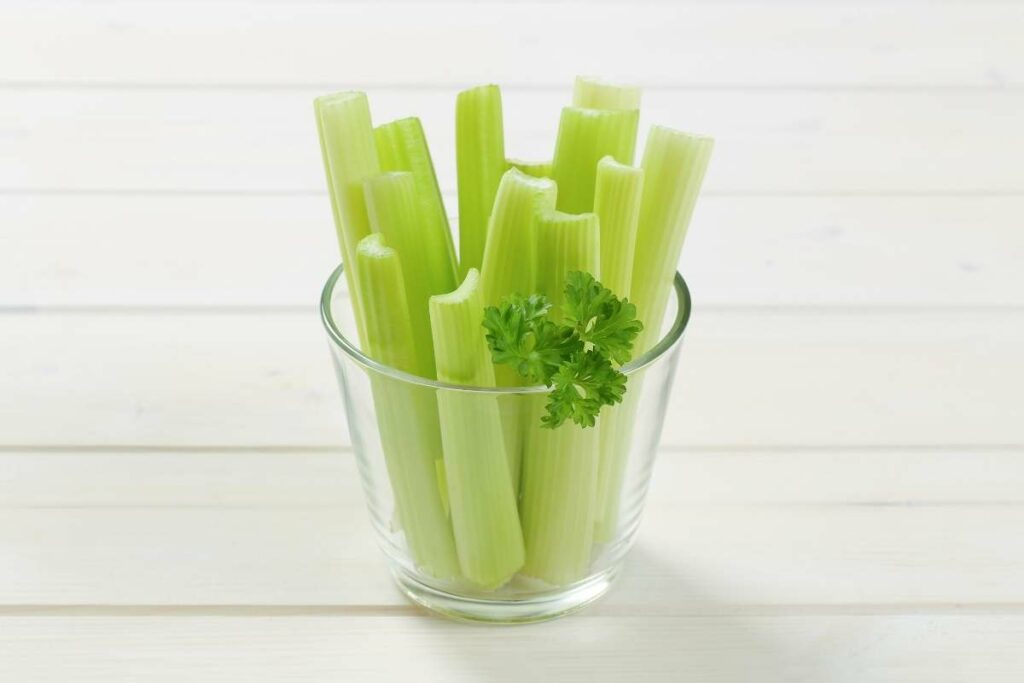
Celery has long been touted as a zero-calorie food. It’s the poster child for zero-calorie foods, really.
It is a good source of vitamin K and water, so it can be filling. However, there is an obvious problem with this food: It has virtually no taste. People tend to add peanut butter or cream fillings to this snack, which runs up the calorie count.
To maximize the benefits, eat celery with your meal in soups or in your green smoothies. Or try some hummus instead of peanut butter!
Calories per cup – 16 k/cal
8. Lemons
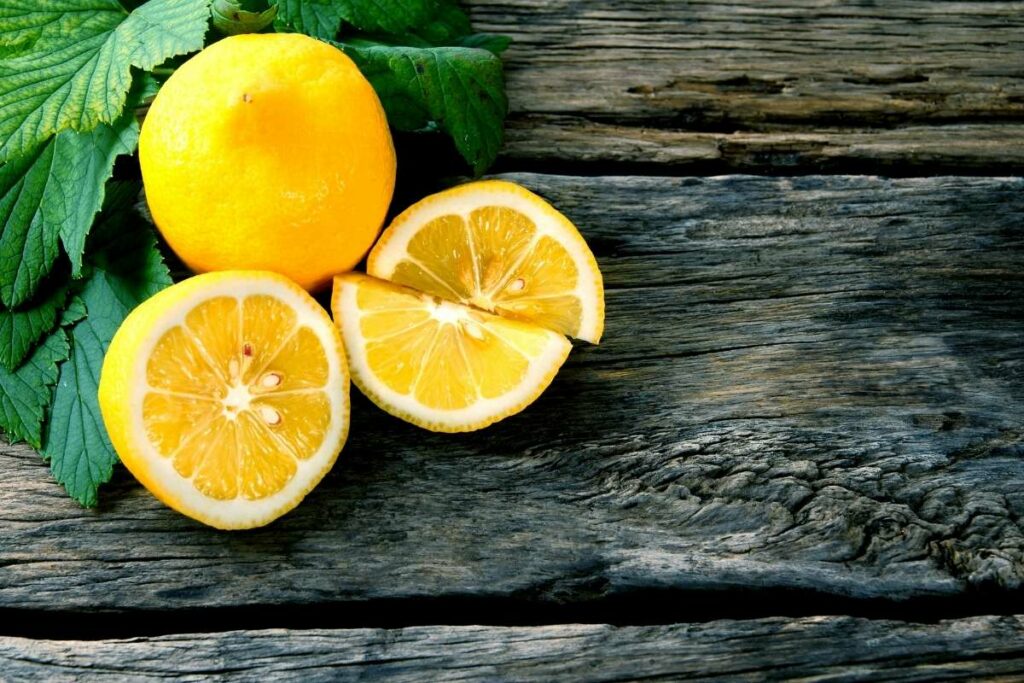
Well, you’re not likely to munch on a lemon anytime soon, but lemon juice specifically packs a powerful punch.
Lemons are a great source of vitamin C and do wonders for your liver and digestive system. They’re also very high in antioxidants.
One of the absolute BEST ways to consume lemons is in some warm lemon water in the morning. It’s incredibly detoxifying to the system first thing in the morning before you’ve dumped coffee or food down your throat.
Just make sure to let the water cool down just a bit before adding the lemon juice because hot or boiling water can kill the natural enzymes. Try 1/2 lemon juice in a warm cup of water — with a straw to keep the juice from wearing down on your tooth enamel.
Calories per cup – 61 k/cal
9. Sugar Snap Peas
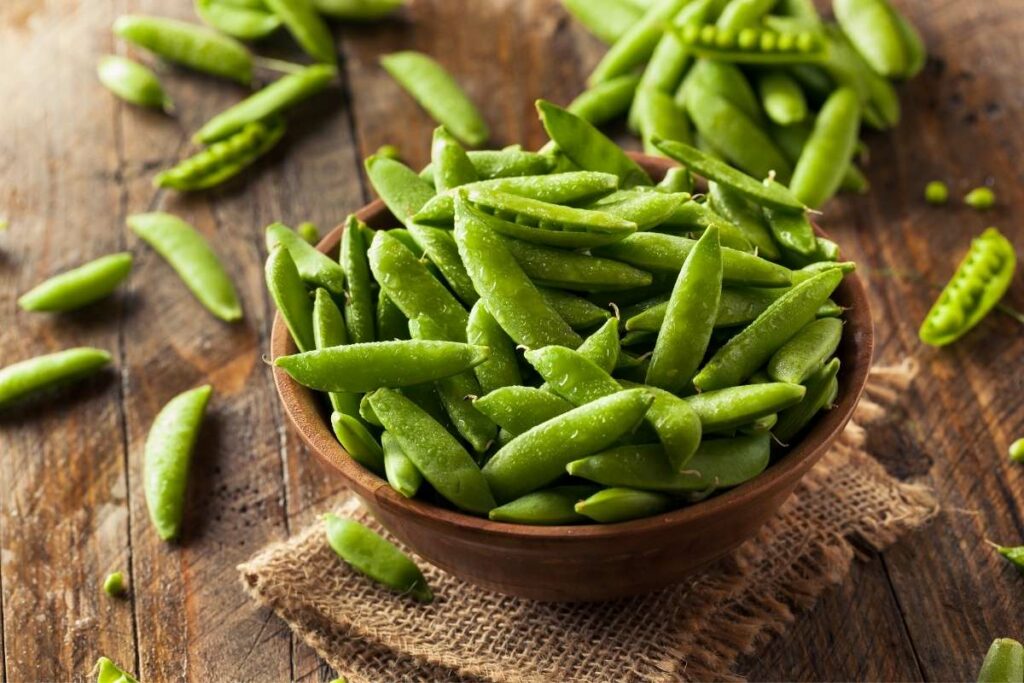
These little guys are high in fiber, vitamin A, vitamin K, vitamin B, and many other minerals the body needs.
If making a healthy stir-fry or are looking to try a new healthy snack, give them a try! Cook them in the oven or on the stove, and add a little salt to flavor!
My favorite way to consume sugar snap peas is on my salads!
Calories per cup – 41 k/cal
10. Tomatoes
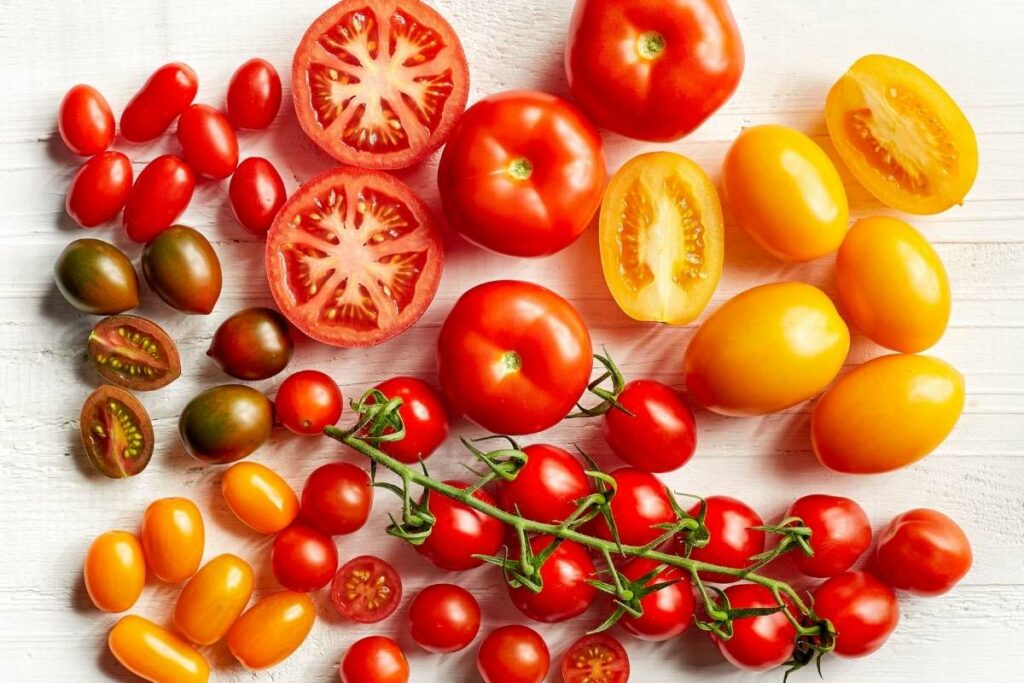
Tomatoes contain large amounts of vitamin C and other antioxidants, but they are best known for their high concentration of lycopene. Lycopene has been repeatedly shown to fight cancer and ward off heart disease.
If you don’t love tomatoes, try shopping them up very finely and adding them to pico. You can also cook them, but it does kill off some of the natural nutrients in the raw fruit.
Calories per cup – 32 k/cal
11. Kale
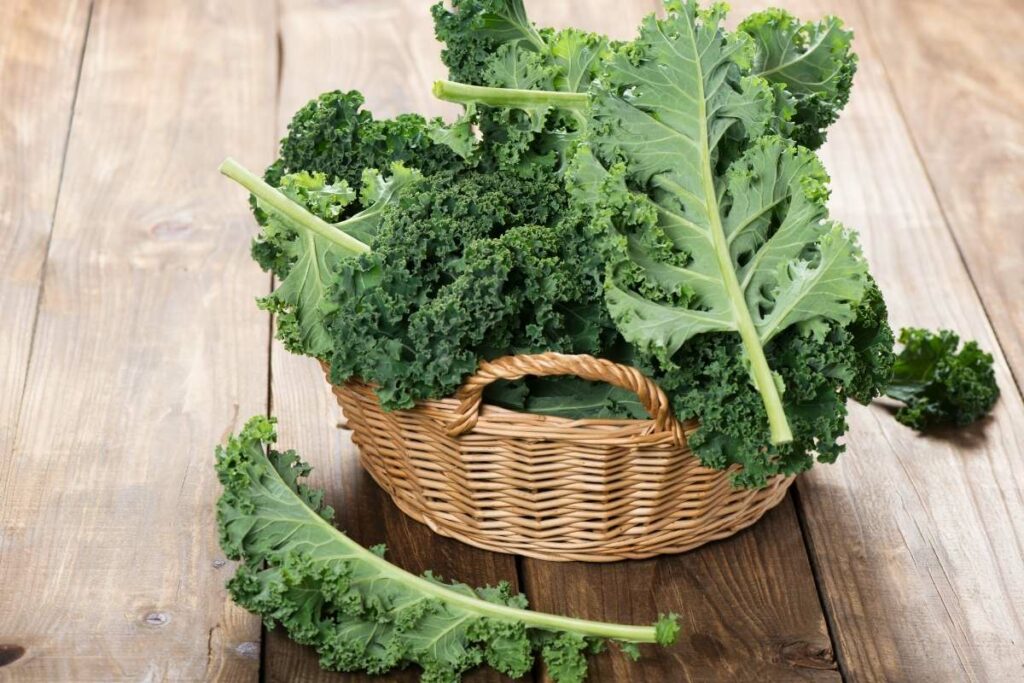
Kale — we all love to hate it. There’s simply no better way to say it: Eat. More. Kale.
It’s considered one of the most nutrient-dense foods on the planet and contains high amounts of vitamin A, vitamin K, vitamin C, antioxidants, and has been shown to lower cholesterol.
The best ways to consume more kale are through green smoothies, adding them to salads, or by making kale chips!
Calories per cup – 33 k/cal
12. Grapefruit
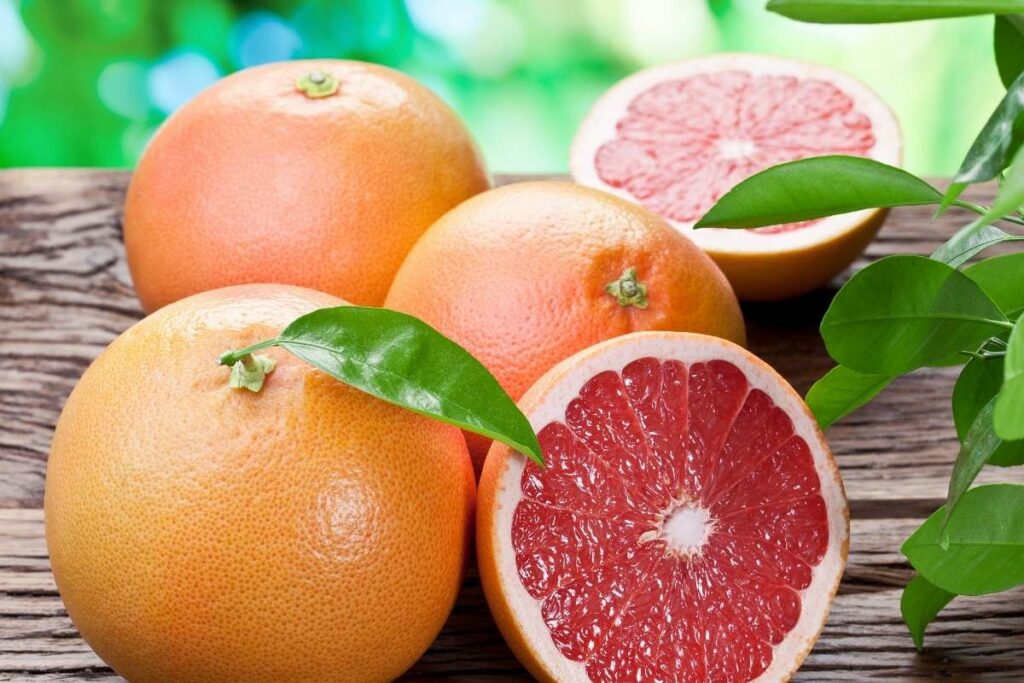
Grapefruits are often associated with dieting and have long been promoted as an incredibly healthy breakfast item. They are loaded with vitamins and are low in calories, but they really shine from their large amount of anti-aging antioxidants.
Just make sure to avoid the traditional half of a grapefruit with a pile of table sugar on top like my dad and everyone else that I knew ever that ate grapefruit had for breakfast.
They’re pretty sour and bitter, so instead of adding sugar to cut the taste, try adding into a smoothie instead!
Calories per cup – 97 k/cal
13. Onions
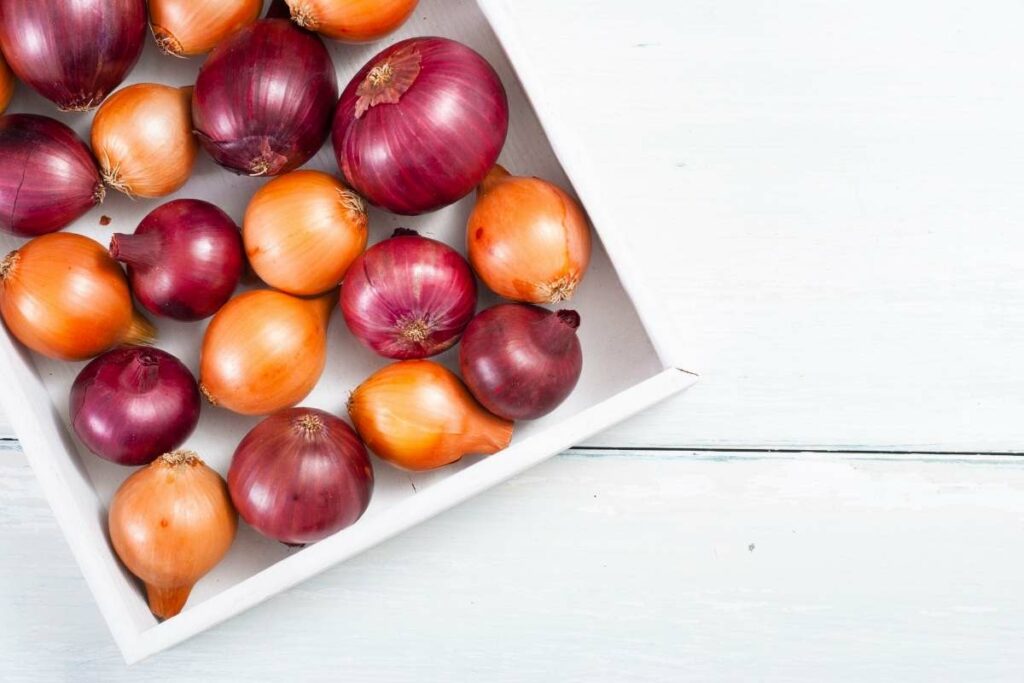
Onions are a delicious and flavorful addition to any meal. They have been shown to have cardiovascular benefits, support bone tissue, lower inflammation, and lower your risk of certain cancers.
They can be eaten raw in salads or cooked in a variety of different ways to help with weight loss goals.
I personally love to eat red onions raw on my salads and white or yellow onions cooked in my omelets or soup.
Calories per cup – 46 k/cal
14. Carrots
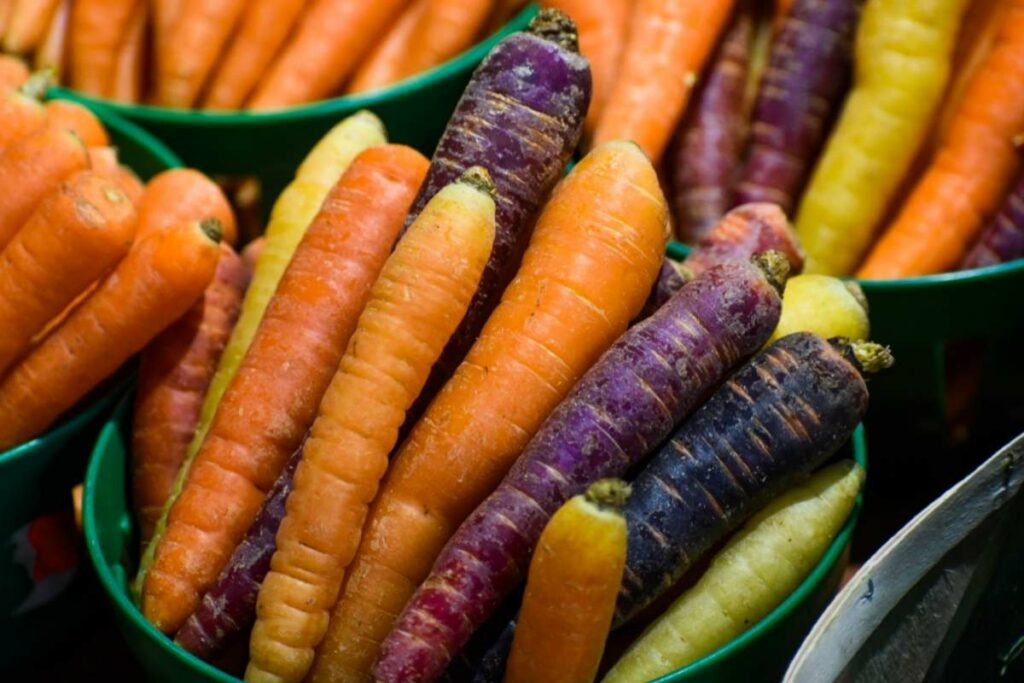
Carrots are known to protect eyesight, but they also have plenty of antioxidants and are a natural diuretic.
This helps with digestion and keeping the body’s natural inflammation in check.
Carrots can be added to salads, served cooked with your main dish, or can be used as a stand-alone snack making them an incredibly versatile low-calorie food!
Calories per cup – 53 k/cal
15. Zucchini
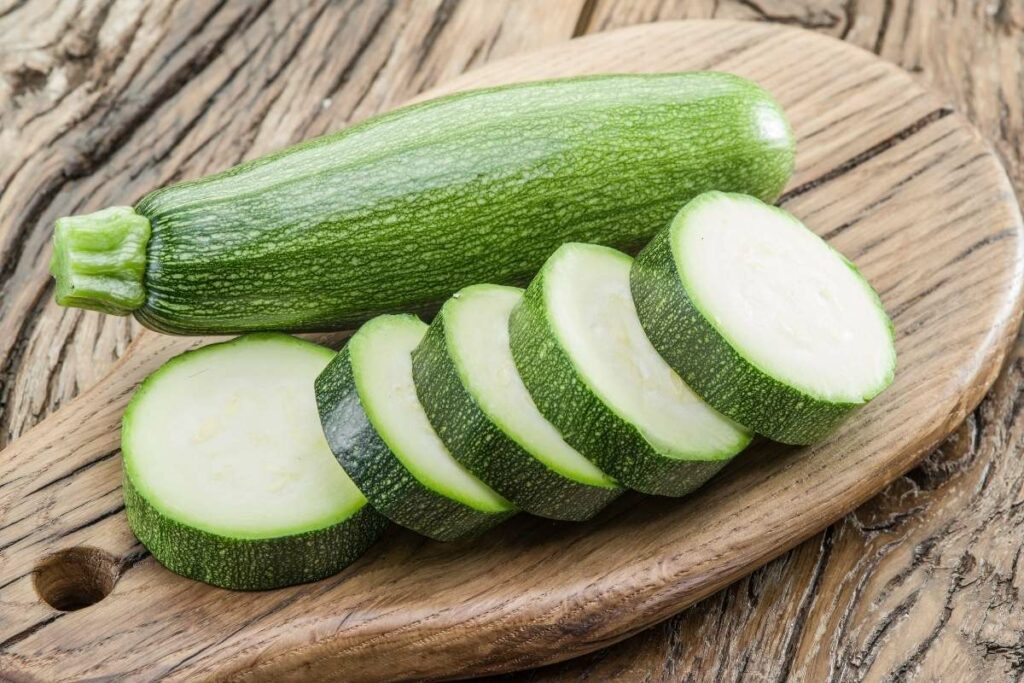
This is a great side dish, but it can also make a killer gluten-free substitute for pasta.
vegetable spiralizer
Spiralizer 7-Blade Vegetable Slicer
Strongest-and-Heaviest Spiral Slicer, Best Veggie Pasta Spaghetti Maker for Keto/Paleo/Non-Gluten, Comes with 4 Recipe Ebooks. Click here.
They provide a bountiful source of magnesium, fiber, and folate in your diet. They also contain lutein and zeaxanthin, which are powerful phytonutrients that fight off many forms of cancer.
Calories per cup – 21 k/cal
16. Cauliflower
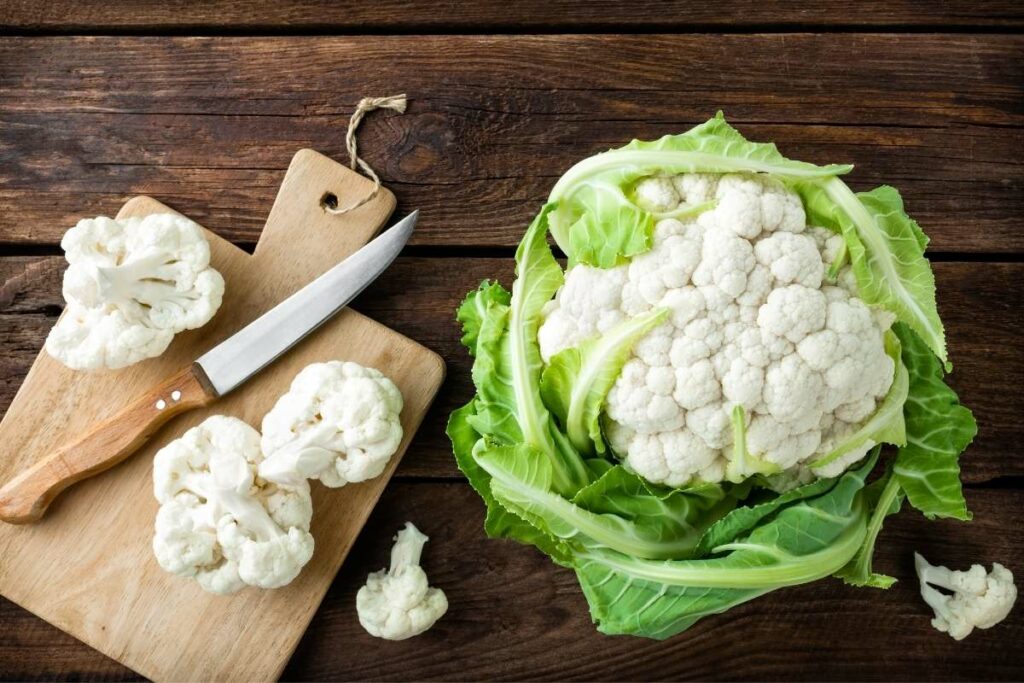
Another great side dish with a similar shape and consistency to broccoli is cauliflower. It provides many antioxidants and anti-inflammatory benefits from its rich stores of Vitamins K and C.
The best way to cook this veggie is to eat it raw or lightly steam it as a side dish before serving. It’s a great low-calorie mix-up from the typical green veggies and will provide you with a different variety of nutrients and benefits.
17. Cabbage
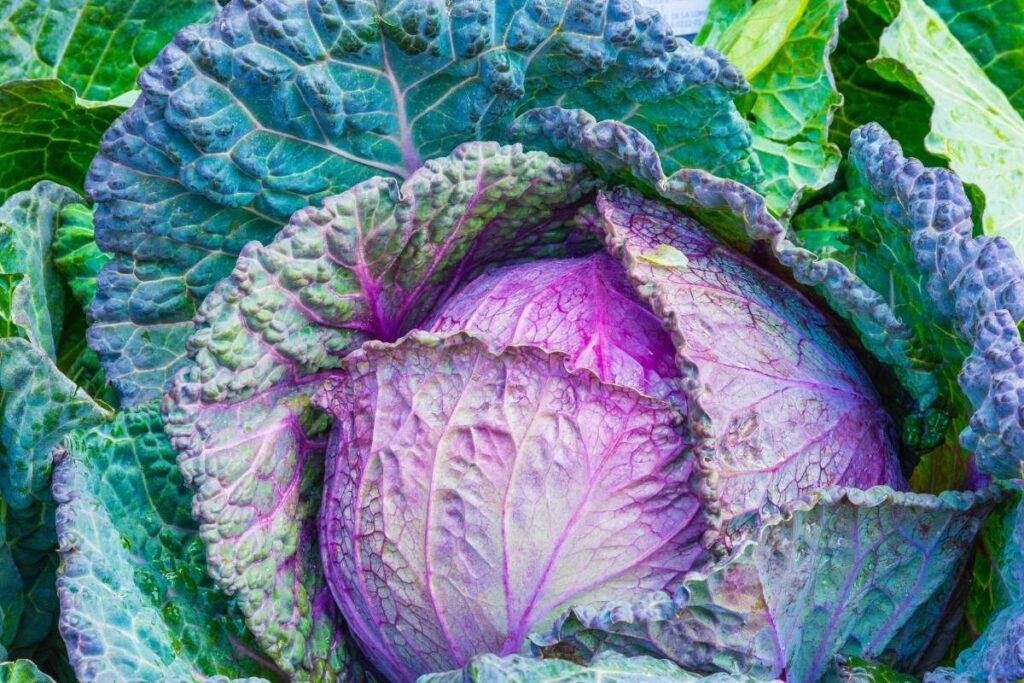
Cabbage is also low in fat and cholesterol, and is a good source of fiber. It’s also a source of vitamins C and K, and provides a variety of other minerals.
Cabbage can be eaten raw, cooked, or fermented (as in sauerkraut). It can be used in soups, stews, salads, and stir-fries.
There are over 400 different varieties of cabbage grown around the world, from round to conical in shape; with flat, curly, tight, or loose leaves.
And you can really brighten up any dish with the variety of cabbage colors: green, white, red, and purple.
Calories per cup – 17 k/cal
18. Teas & Coffee
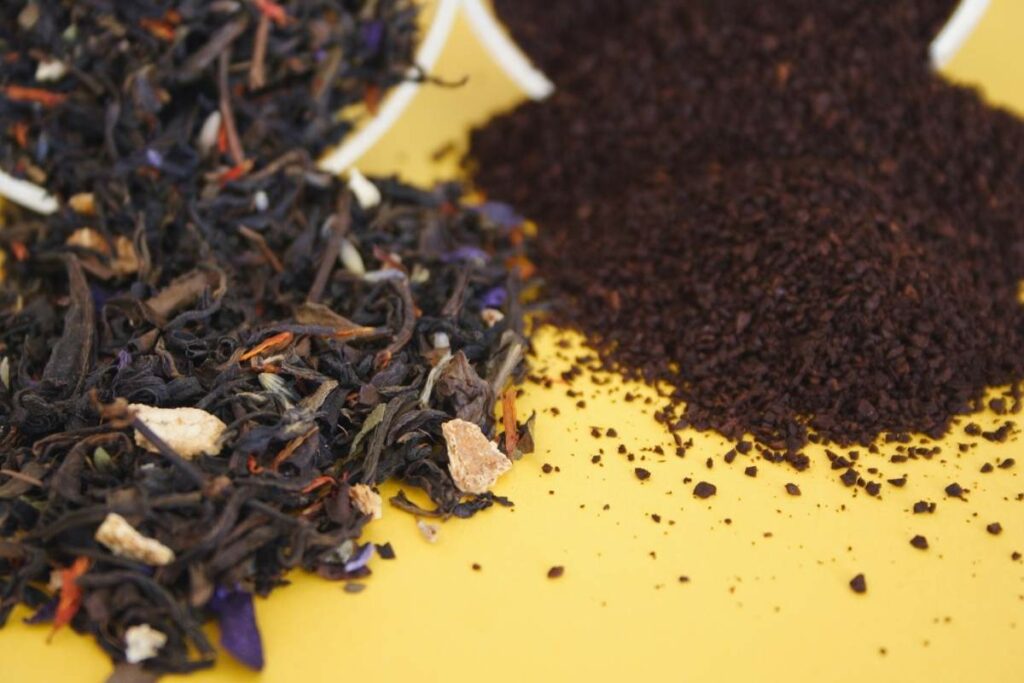
Many people think that tea and coffee are zero calories. This is not the case. Both tea and coffee have calories.
The average cup of coffee has about 2 calories. A cup of tea has about 3 calories.
But beyond their delicious taste, there are also many health benefits to be gained from drinking tea and coffee.
For one, both tea and coffee contain antioxidants that can help to protect cells from damage and promote overall health.
Additionally, tea and coffee have been shown to boost cognitive function and improve mood.
Calories per cup – 2-3 k/cal
19. Peppers
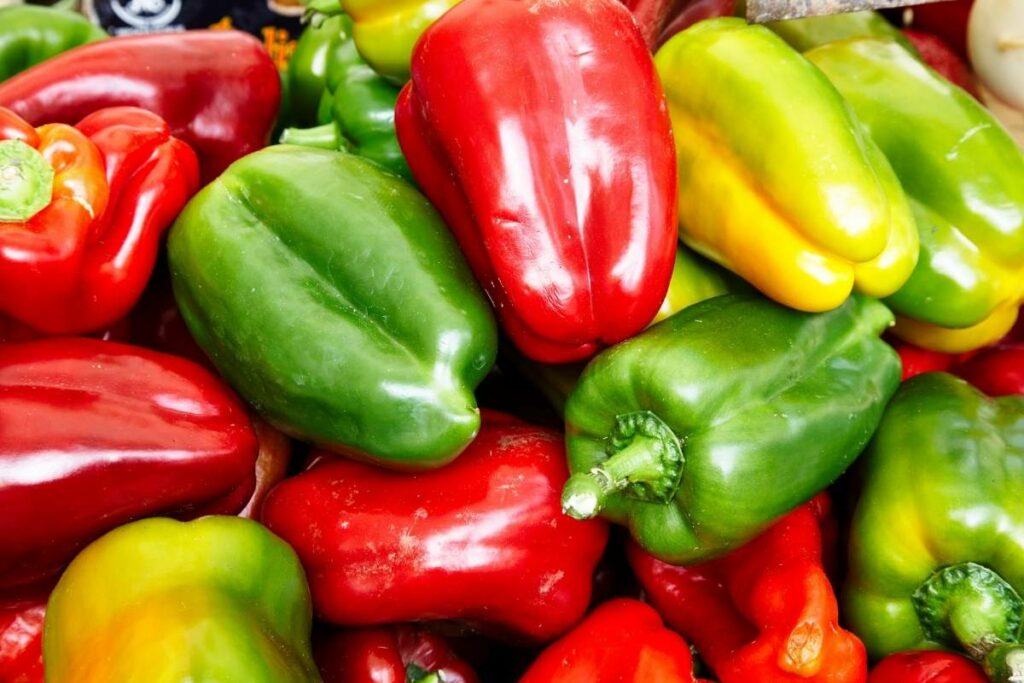
Peppers are low in calories and a good source of vitamins A and C. They also contain flavonoids, which are antioxidants that can help protect cells from damage.
They also contain Capsaicin, which is a compound that has been shown to have anti-inflammatory and pain-relieving properties.
Eating peppers on a regular basis can help to boost your immune system, improve your digestion, and reduce inflammation throughout your body.
In addition, peppers are a great way to add flavor to your food without adding any extra calories.
Calories per cup – 28 k/cal
Check out this Chipotle Okra and Peppers recipe from Healthy Ambitions!
20. Berries
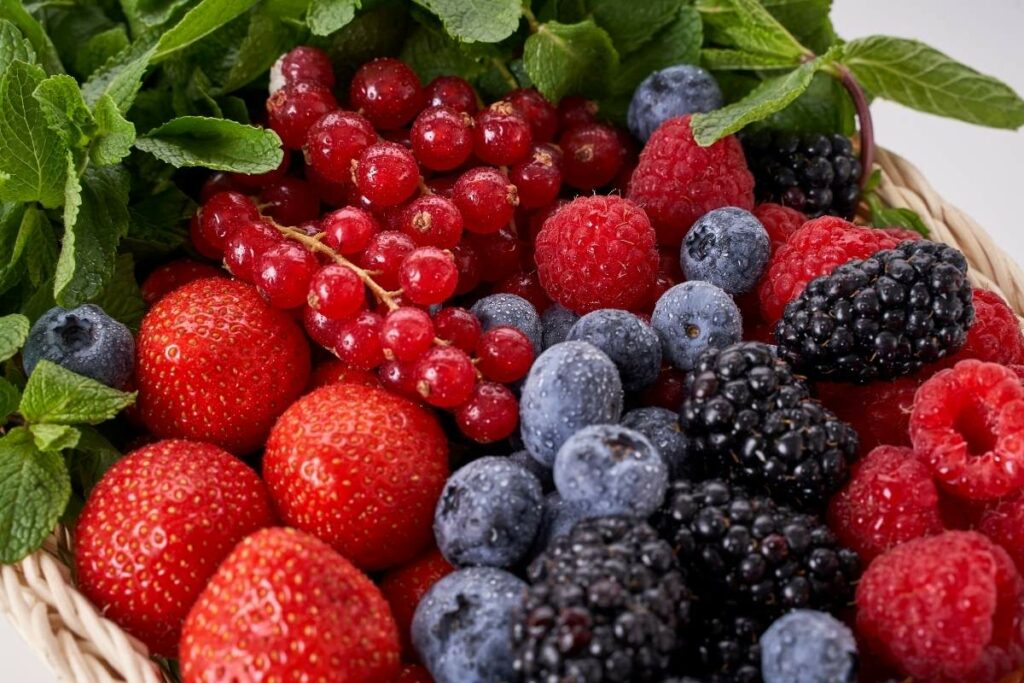
Most people are familiar with the benefits of berries. They are a great source of vitamins and antioxidants, and they can help improve your cardiovascular health.
But did you know that berries are also low in calories? In fact, a single cup of strawberries only contains 50 calories.
And because berries are so nutrient-dense, they can help you feel fuller longer, making them an excellent snack choice for those trying to lose weight.
Calories per cup – 62 k/cal
21. Mushrooms
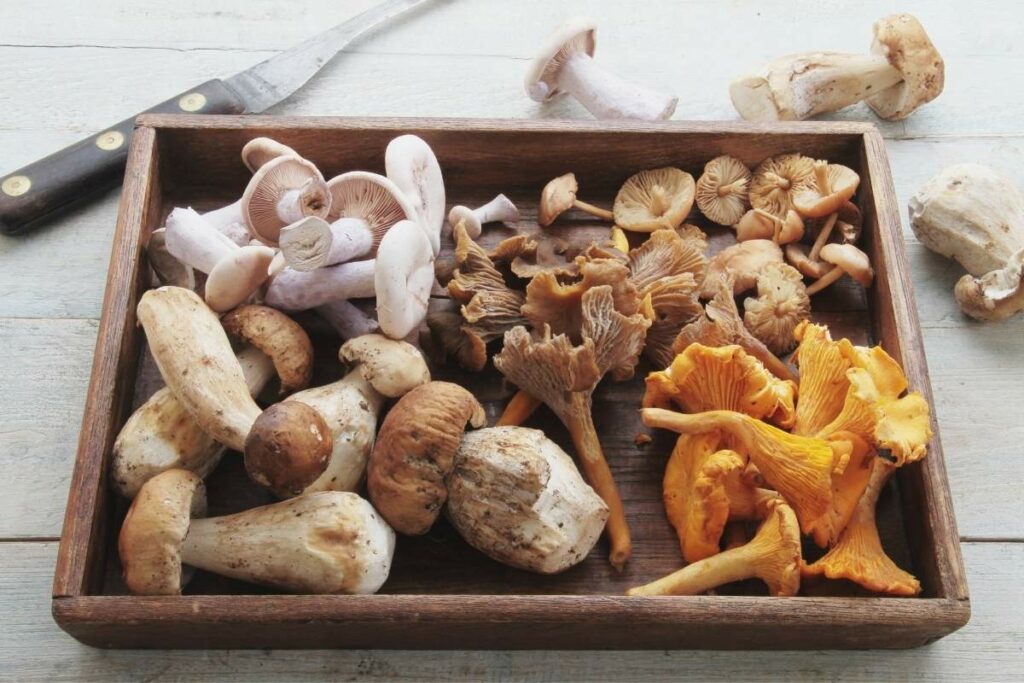
While many people think of mushrooms as simply a flavorful addition to meals, these low-calorie fungi offer a wide range of health benefits.
Mushrooms are a great source of antioxidants and B vitamins, which can help to boost energy levels and promote overall health.
They are a good source of fiber, helping to support digestive health.
Best of all, mushrooms contain compounds that can help to boost the immune system and fight off infection.
Calories per cup – 16 k/cal
22. Pickles
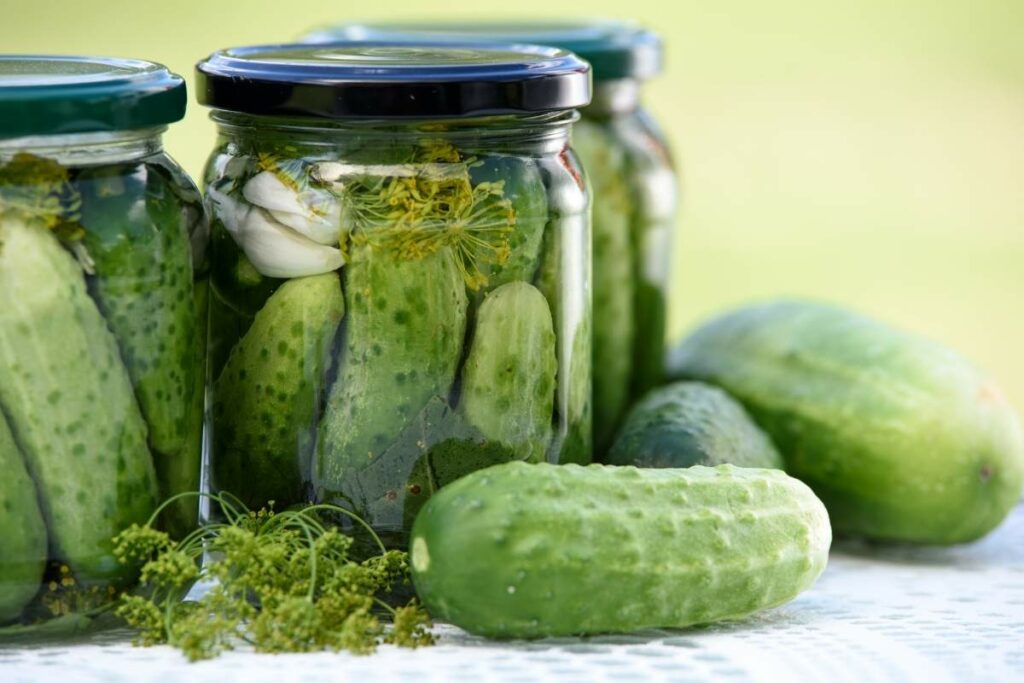
Pickles are cucumbers that have been soaked in brine (water, vinegar, and salt) mixed with spices. As cucumbers soak in the mixture, they transform into pickles.
Pickles are a good source of several nutrients, including vitamin K and sodium. They also contain a small amount of calories.
Calories per cup – 16 k/cal
23. Mustard
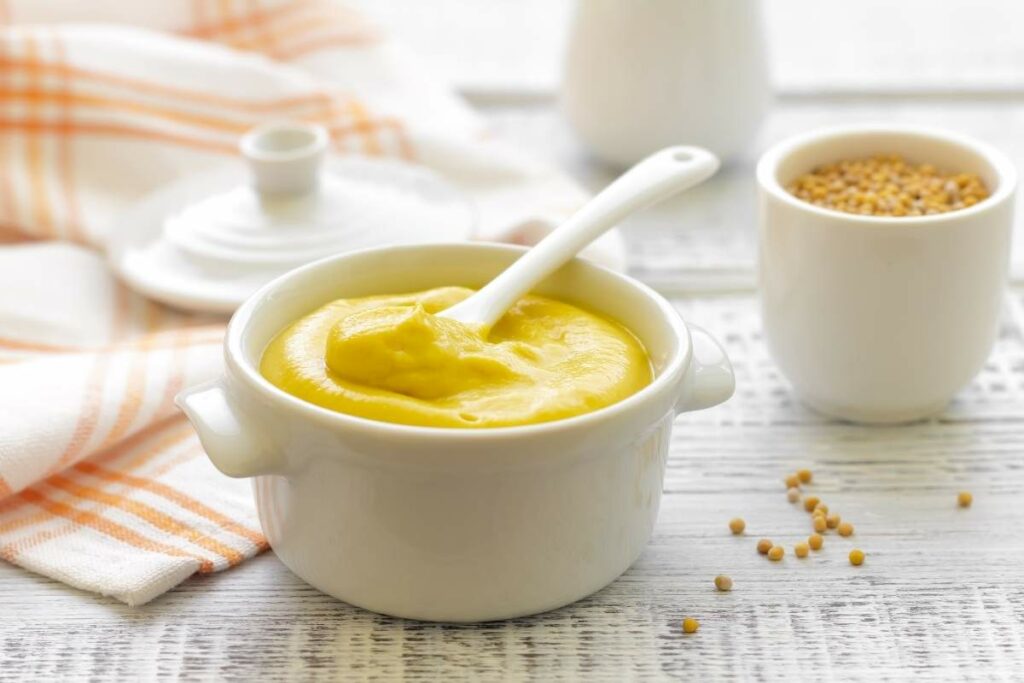
Mustard is a healthy condiment that has a number of benefits.
It’s low in calories and fat, making it a great choice for those watching their weight. Additionally, mustard contains compounds that can help to boost the immune system and improve digestion.
Mustard also has anti-inflammatory properties, which can be beneficial for those suffering from conditions like arthritis.
Finally, mustard is a good source of vitamins and minerals, including vitamin C, iron, and calcium.
I’m not going to include calories for a full cup of mustard, because really, who would eat that much, lol
Zero Calorie Foods Questions
I could go on and on with this list as there are many more zero calorie foods I could add…and perhaps I’ll come back to add to this list in the future, but for now, I wanted to answer some common questions first.
Is there any food with 0 calories?
There is no truly zero calorie food, but you can enjoy water and diet drinks for zero calories. However, stay away from diet soda and drinks that include chemical low carb sweeteners.
I recommend sticking to products like Zevia which are sweetened with stevia.
What are negative calorie foods?
Negative calorie foods are simply foods that take more calories to digest than they contain. This means that eating negative calorie foods can actually help you lose weight!
Some examples of negative calorie foods include celery, cucumbers, and grapefruit. So if you’re looking to shed a few pounds, you might want to add some of these foods to your diet.
Looking for a Weight Loss Plan that Incorporates Low Calorie Foods?
We created our 21 Day Fat Loss Challenge for people exactly like you—people who feel like they’ve tried everything under the sun, but just can’t shed the weight or keep it off.
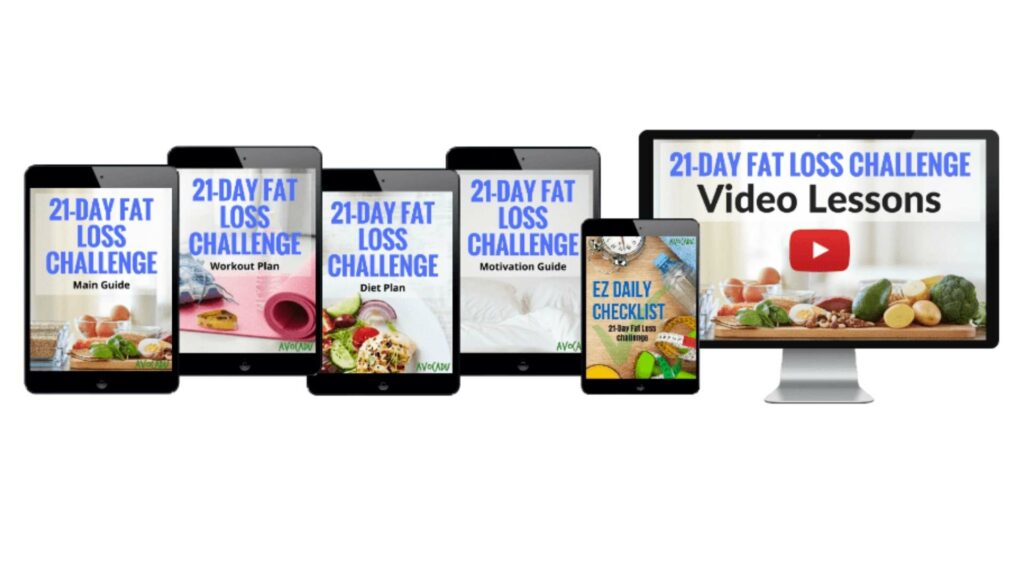
Our challenge provides a step-by-step plan to help you lose up to 21 lbs in just 21 days, with far less effort than you may think!
The Challenge will walk you through your carb detox, and help you start your weight loss journey the right way.
Tons of our clients have turned it into a lifestyle diet and have lost as much as over 100 pounds with the challenge–including many members who have reversed their insulin resistance!
The best part? Besides just losing weight, the 21 Day Fat Loss Challenge was designed to heal your gut, rebalance your hormones, and retrain your tastebuds—so you’ll actually be able to keep the weight off!
If you’re ready to make some changes in your life, this is the ONLY place you should start. We’ll teach you exactly how to make the necessary changes in your diet and lifestyle, and how to keep them “beyond the diet.”
Take control of your life and start your 21 Day Fat Loss Challenge TODAY!
Related Articles
- 16 Gluten-Free Low-Calorie Meals That Fill You Up
- 11 Quick and Delicious Keto Dessert Ideas
- Chicken Meal Prep Ideas for Weight Loss + 31 Recipes
- 3 Delicious Weight Loss Smoothies that Don’t Taste Like Dieting
- 12 Paleo Dinner Recipes for Weight Loss
- 5 Detox Tea Recipes for Weight Loss
Leave a comment below if you enjoyed this article on zero calorie foods for weight loss or have any questions!


Mmmm definitely need some more of these in my life!
I especially liked the tips about how to eat or cook them.